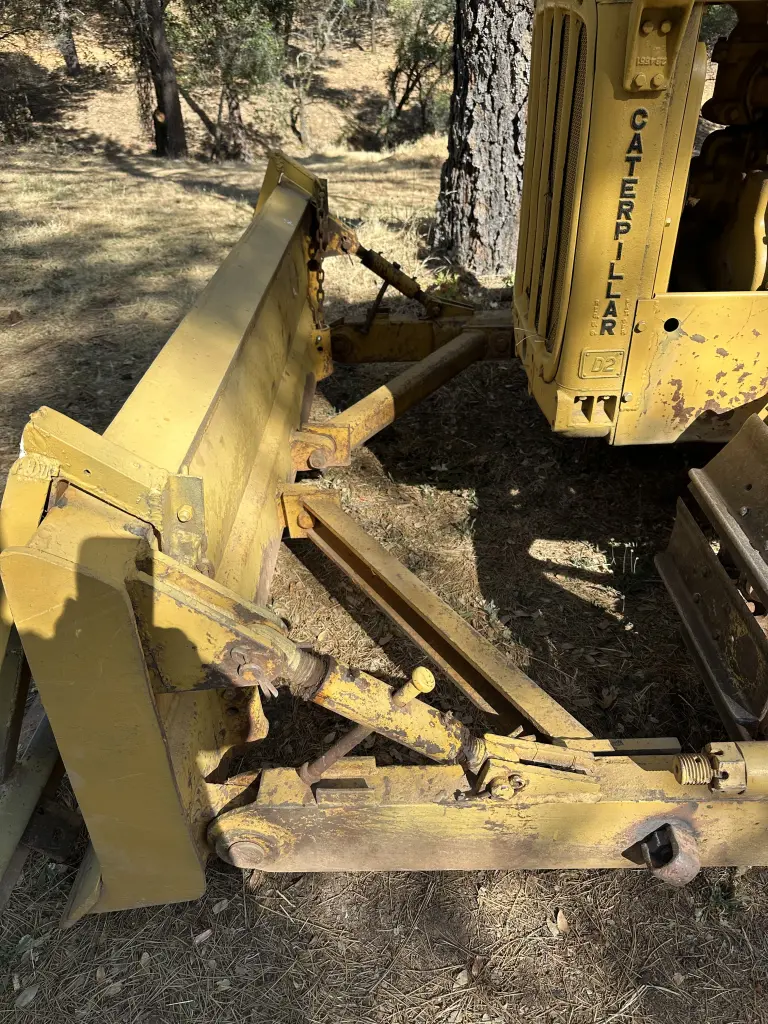Tell me about the tilt adjusters on my toolbar blade…
What is the main advantage of these?
I want to use D2 to cut some tractor trails along the contours of my hilly property, to drive rubber tired tractors.


Obviously an angle blade would be better. But do the tilt adjusters offer anything for that?
You can adjust one side to help cut slopes, say make a crown in the road.
Angle blade would allow one to push dirt from the side of an edge, to widen a road.
You can adjust one side to help cut slopes, say make a crown in the road.
Angle blade would allow one to push dirt from the side of an edge, to widen a road.
So the turnbuckle must be used in combination with the threaded rod adjuster where the ram mounts to allow tilting side to side? Now I think I understand, that’s handy indeed.
I guess I thought the turnbuckles were just for tilting the blade forward and back.
If you adjusted both same time same direction, then yes, you are correct about changing the pitch.
I do not see the “training wheels” I call them on your blade; skids or shoes that are adjustable so it helps control depth of cut.
If you want, I should have some operator books etc for the toolbar type blade you have.
Longer track frame, large idler and counterweight such as a winch help considerably when trying to be precise.
If you adjusted both same time same direction, then yes, you are correct about changing the pitch.
I do not see the “training wheels” I call them on your blade; skids or shoes that are adjustable so it helps control depth of cut.
If you want, I should have some operator books etc for the toolbar type blade you have.
Longer track frame, large idler and counterweight such as a winch help considerably when trying to be precise.
I’m definitely interested in an operator book for the tool bar blade. Thanks for the great info. Can’t wait to try tilting the blade.
Hi, Potato Wilson.
Winding the turnbuckle out will raise that corner of the blade while winding it in lowers that corner. You can wind each in opposite directions to gain additional tilt. As juiceman posted, winding both in the same direction changes the fore-n-aft tilt of the blade for better cutting - tilt forward - or better carrying dirt - tilt back.
Tilting the corner on the inside of your cut down will often help you to stay more or less level across your cut as the outside track, often being in softer dirt, will be more inclined to sink down.
Onna different but associated note, unless there was a good reason, I never cut such tracks level across the track but leave the outside SLIGHTLY lower to aid drainage. This allows any runoff to go over the side in a sheet all along the track rather than as streams in a few places which contributes to washouts.
Just my 0.02.
You have a wonderful day. Best wishes. Deas Plant.
good tip deas. ive seen that happen and it just keeps gouging out more and more each rain event till the track is unusable.
"i reject your reality and substitute my own" - adam savage. i suspect my final words maybe "well shit, that didnt work"
instead of perfection some times we just have to accept practicality
Hi, trainzkid88.
I've had to repair a few roads with that problem. My first job on Mitchell Plateau in the Kimberley in 1971 was opening up the road from the camp to the barge landing at Port Warrender in Admiralty Gulf, a distance of 25 miles - a road which suffered from the same 'disease'.
Just my 0.02.
You have a wonderful day. Best wishes. Deas Plant.
Guys, I have learned too. Normally we would use an orchard type scraper with a 10-12' cut, straight level; yes, you would have a smooth road, but then the water either pools or has nowhere to run. I fixed our entry road with 1.5" drain rock with a very minor angle (crown) and it has held up very nice, aside from one small pothole. Now I save some more coins to buy a couple hundred more yards of material to finish it. JM